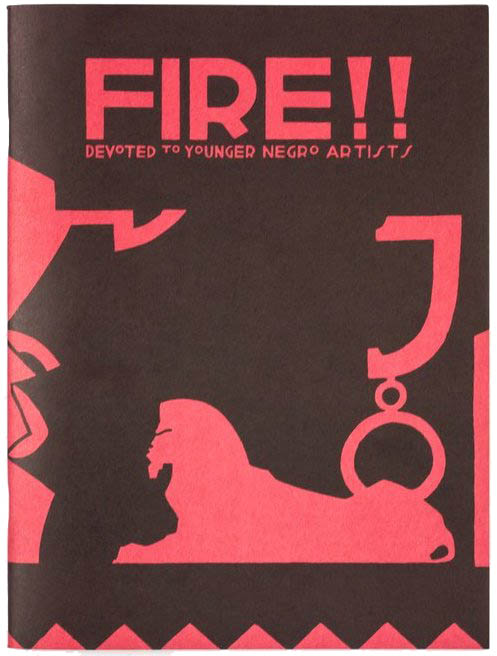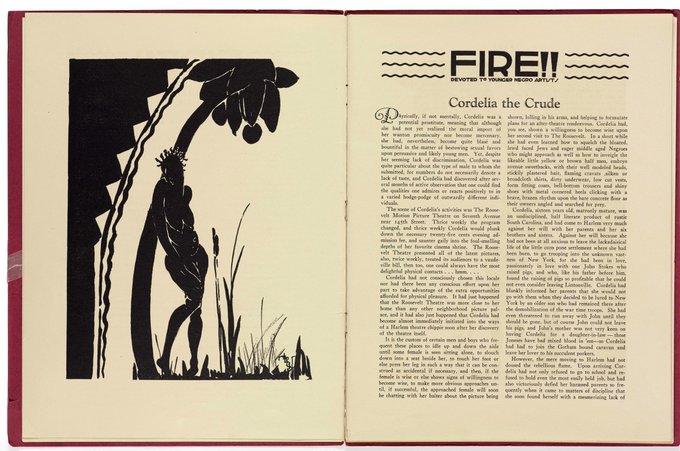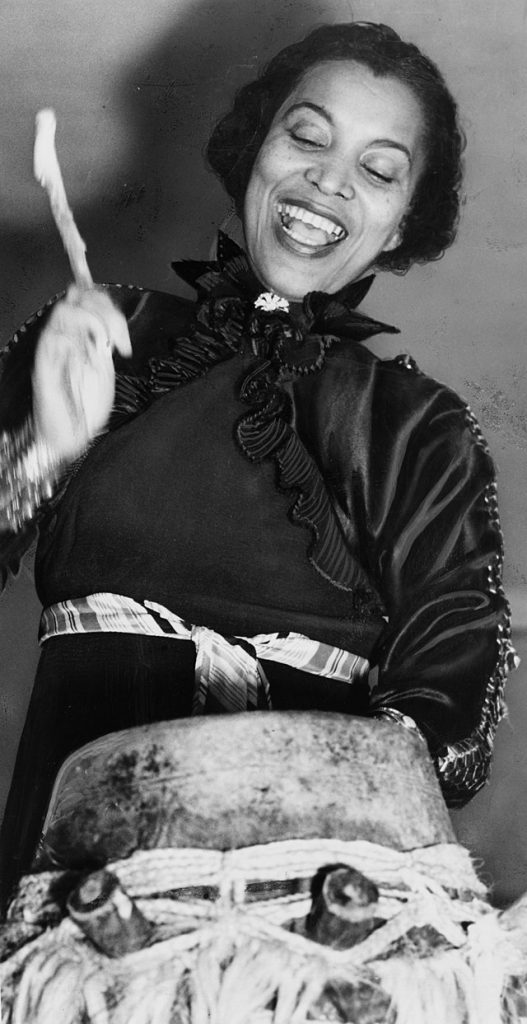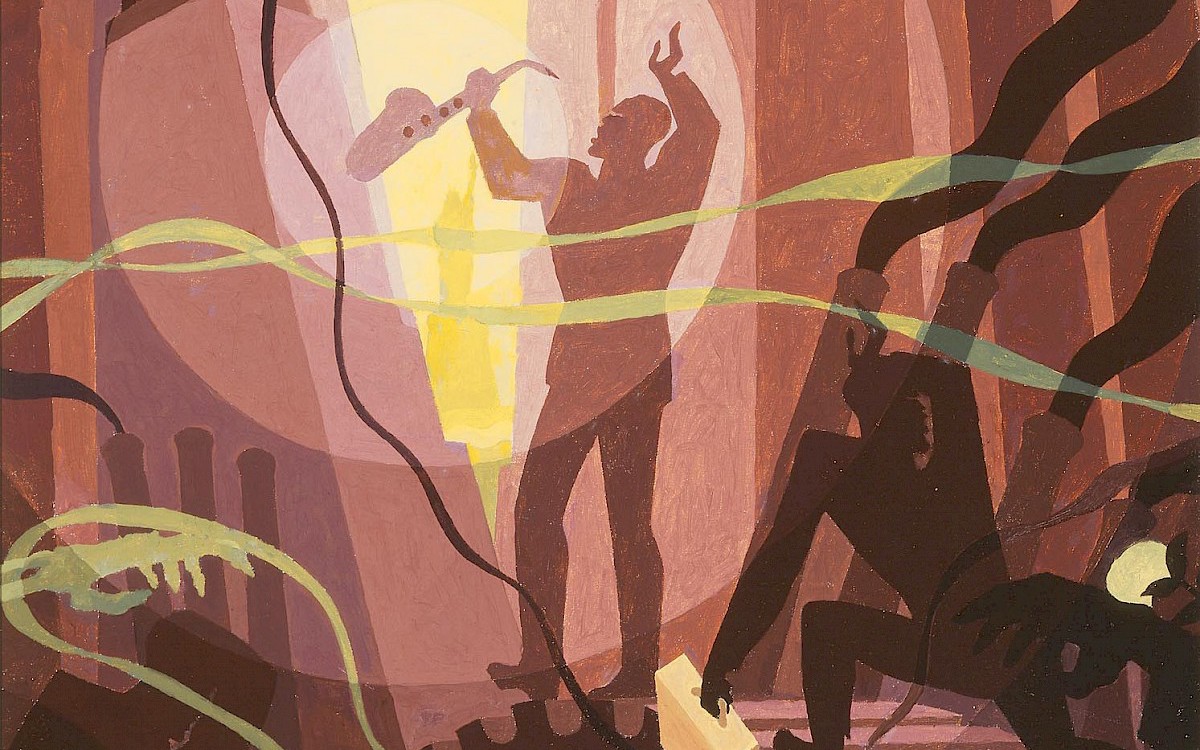Before we dive into the words assembled for you, I thought I’d introduce myself. I’m the newest regular contributor here at Puttylike. Over the summer, I pitched the brazen idea of writing about multipotentiality at the intersections of identity and culture. Emilie and the team welcomed the challenge.
My own identities are sundry, clashing, and constantly evolving. As I’m certain, yours are too. We are scanners, after all. A couple identities have stuck with me throughout the span of this life. I am Black. I am Camp. And I am Nasty. I write in the tradition of Blues Women—those raucous personalities who thrive at the edge of respectability. My speech may sound stank sometimes. This is intentional. I am a daughter of Funk.
In this spirit, I’d like to walk you back to the Roaring ’20s, where we’ll visit my favorite irreverent multipotentialites of the Harlem Renaissance.
We know that we are beautiful. And ugly too.
Langston Hughes, 1926 | poet, novelist, playwright, columnist, and communist
Reading the works of many writers of the Negro Renaissance, you get the sneaking suspicion that whores abounded in the 1920s. Hardly any artist of the time failed to give some account of a lady who “sold her wares” in Harlem. Unafraid of crass and sensuous things, these artists pledged to make record of contemporary Black life as it was, in full human glory.
The breeze gave to him a perfume stolen from some wandering lady of the evening.
Richard Bruce Nugent, 1926 | writer, editor, illustrator, muralist, painter, actor, dancer, and organizer
Revelatory accounts of jazz cabarets, speakeasies, gin parties, and hoe strolls were appalling to the Colored middle class. Marching orders of the day intended to halo Black life—to project that we were upright, upstanding, and respectable people. All of Harlem’s trombones and moans from infamous cathouses were soot to be swept under the rug.
Then came Fire!!
Intended as a quarterly periodical, Fire!! was a one-issue wonder founded by seven Harlem luminaries—Wallace Thurman, Zora Neale Hurston, Langston Hughes, Gwendolyn Bennett, Richard Bruce Nugent, Aaron Douglas, and business manager John Davis. This collective desired independence from commercial and socio-political constraints. They possessed the decadent audacity to want to make art for art’s sake. So they threw some money in a pot, asked around for additional coins, invited contributors, published a magazine they were all proud of, and had it placed in shop windows across Greenwich Village.

Wallace Thurman was the quarterly’s editor and ringleader. Dark and rebellious, he had no patience for high society morals. He opened the magazine with the short story Cordelia the Crude. The title character, Cordelia, was a woman who refused to play out the life designed for her. She found cheap thrills in the local motion picture house, heading home after a night at the cinema, with any young man who occupied the seat next to hers. “Chippies” is the slang they used, back then, for women who enjoyed the brief company of many partners. If paid for these encounters, an upgrade was awarded, and a lady came to be known as a prostitute. The term “sex work” was adopted fifty years later, but we haven’t arrived there yet. In 1926, you just got harlots and hussies, okay!

Fire!! contributor Lewis Alexander lived his best multipotentialite life as a poet, actor, playwright, and costume designer. In his poem, Little Cinderella, he shows us a gritty gal who is deliberate in her conquests. Unlike Cordelia, who steps into the profession on accident, Little Cinderella is presented at career heights. Her words are poetry, calling out “long and lean” lovers to follow her home from “Club Alabam”—a literary nod to the Great Migration, when a wave of southern Blacks made their way north, to supposedly lynch-free cities (there were other terrors ready to greet them upon arrival).
Arranged as two quintets, Little Cinderella’s lyrics beg recital. Breath pungent with bathtub gin sings each verse. She ain’t sad and this ain’t sorrow. Little Cinderella is free from pomp, circumstance, and all the early twentieth century vagaries of modesty. She is the siren of smoke-filled nights, luring club-hopping daddies not to destruction, but to cap off the evening with even more pleasure.
“She ain’t the marrying kind.”
Gwendolyn Bennett, 1904 | poet, short story writer, journalist, artist, educator, and fellow traveler
Gwendolyn Bennett’s short story, The Wedding Day, ships readers off to Paris on a cruise liner. There, we spend time in the 18th arrondissement, under the large hill of Montmartre, and on the somewhat slimy Rue Pigalle. We meet Paul Watson, an amateur fighter with a heavy rage against all things White and American. Bennett tells us this Paul “could beat up ten men, but was scared to death of one woman.” A committed bachelor, he swears off romance, until a “street woman,” both American and White, slides under his arm and steals his heart. Spoiler alert: Jim Crow energy boards the same ship to Paris and halts their matrimony.
Both Thurman’s and Bennett’s short stories are headlined by Richard Bruce Nugent’s art deco style silhouettes of women in the nude. He inks them black, not as an indicator of race, instead as a symbol of their status as social outliers. They are no doubt, dark-skinned, though. They have that crinkly hair that shoots up towards the moon. Or round and soft puffs of afro texture, following its own improvisations. Because he was also a dancer, a sense of movement is present in these illustrations, particularly in his second drawing, where the figure’s hands pirouette in profile. Nugent sets the first drawing in nature, but not an idyllic, pastoral, farm-like depiction. He draws a wild, untamed place. His portrait teases wide hips, a round belly, and melon breasts that mirror a tree above, providing his coy muse with shade from what feels like wet, tropical heat. He intends to provoke all our senses.
One-Hit Wonder
How did Fire!!, intended as a quarterly, end abruptly with one printed issue? Nugent, who was religiously adverse to employment, collected the proceeds from bookstore sales and used the funds to buy himself a few good lunches. The printer was never paid. Their headquarters literally caught fire, destroying all unsold copies. This combustion broke up the band, and they all headed their separate ways.
Wallace Thurman went on to write three novels and co-write a Broadway play. He served as editor for both Black and socialist publications and was employed as a reader for a major New York publishing house. He was the very first African American to hold such a position. Thurman died at age 32 of Tuberculosis. Lavish enjoyment of gin is rumored to have accelerated his declining health.
Gwendolyn Bennett never stopped working, but somehow became a footnote in Harlem Renaissance history. Gender could be blamed—Zora Neale Hurston also died in obscurity until Alice Walker dug up her legacy and championed the work. Many of Bennett’s artworks were burned when a house that stored them went up in flames (oh, that pesky fire!). And in the 1940s, she was haunted by investigations from the House Un-American Activities Committee, which pushed her to live a less public life.

Of the original founders, the truest bohemian, Richard Bruce Nugent, lived longest. In 1982, he collaboratively launched a press that reissued Fire!!, contextualizing the original and making the art and writings of the time accessible to us all. You can read it here.
Hopping on the same train as my multipod ancestors, I’ve decided to brave the world of publishing. Collaborating with writers and artists, who bend genres to play with new ways of storytelling, I honor both my scanner nature and the spunk of the Harlem Renaissance.
Your Turn
How has your sense of identity shaped your life as a multipod? Has race, ethnicity, nationality, sexuality, gender, ability, age, religion, or socioeconomic status had impact in your own Puttyverse?

Hi! I was happy to read your article here, which I then later shared on Facebook. I love reading history, especially any that brings focus to aspects of history outside of the “great white male” perspective that is still to frequently told to the exclusion of others.
Thank you for sharing on Facebook Patrick! I’m in love with history too — thanks to a high school teacher who knew how to make learning about our pasts fun.
Awesome article! It shows true art in the way the stories were told and how you disseminated the information. Continue doing great work!
Appreciate the feedback and encouragement Paula! I had fun revisiting the Harlem Renaissance to share these stories here.
Oh, such a joy. I am not a native english speaker, but i enjoyed the beauty of that text. Hope there ist more to come. And i like to hear more of that history.
Whoa! I’m humbled that you were able to connect with the writing even though it’s not written in your native language.
A seed was planted a few weeks ago when a friend mentioned how the Spanish Flu influenced the Roaring Twenties. After reading your words, I’m heading for a full blown obsession. This was so tasty Malika! More nasty funky rebellion please!
Yes! Go deep into those Roaring Twenties. It’s an exciting place to hang out.
What a wonderfully unique voice you have! Really drawn to your beautiful descriptions and the intricacies in the histories we may have otherwise missed. Looking forward to more! This article is Fire, pun intended.
Love the pun, Katie! Virtual toast to all things fire!!
Katie, Do not forget that those high stepping, heavy drinking, wild dancing, irreligious seekers of ecstatic joy were the parents of the 40’s and 50’s were the zealots who demanded their children be chaste and abort or give away their babies. The boys forced to marry and put their nose to the grindstone. The results of this eventually let their grandchildren to be Flower children of the 60’s and demand accountability. Life goes on and generational penalties persevere.
Malika – beautifully written and fascinating accounts of these giants of the Harlem Renaissance. Most of the names are familiar to me, some not, but just the snippets you shared made me want to explore more. I had a very small white suburban education in a fairly poor neighbourhood. We were exposed to Keats, Shelley, Shakespeare, T.S. Eliot, etc – lots of now-dead white men. I love your seductive writing style and how it honoured your topic. I would love to hear lots more about Black multipotentialites. As for me, long having been a multiple-identitied person, I am only just coming to understand there is a name and place for multiple-interested persons. Alas, my life has been shaped by 30 years of chronic illness, and as each year passes, my energy wanes a little more, and I have had to put dozens of my interests aside to be able to keep the last few going. I really look forward to more of your writing. Well done!
Jane, I love how you self-describe on your website, “I’ve been chronically ill & possibly crazy for 30 years.” I could probably add the crazy part to my bio as well, but I won’t, ’cause you thought of it first! So glad you took time to read my article. And I really appreciate your comment. It’s nice that us multiple-identitied folk can gather and connect at Puttylike.
Dear Malika,
I am always glad to share the crazy label! I’ll admit that I’m practicing wearing it lightly, instead of with the shame I used to feel. I think if all of us crazy people got together, we could make a lot of noise and change a lot of hearts and minds!
Thank you for this inspiring glimpse into the richness of the Harlem Renaissance and the sparkling people who grew it. The glow from the Fire lives on through your words.
Here’s to more of the “decadent audacity to want to make art for art’s sake”! And here’s to more, more, more intersectional explorations — intersections are the most vibrant place to place to be — putting the Hum back in Humanity!